#Nest.js Authentication
Explore tagged Tumblr posts
Text
Easy Guide: Adding Authentication & Authorization in Nest.js Are you building a web app with Nest.js? Understanding authentication and authorization is key! In this quick guide, we'll show you how to implement these vital features in your Nest.js projects. With Nest.js, you can build secure and scalable applications with ease. If you're new to Nest.js, check out our tutorial on setting up your first project. Let's secure your Nest.js projects together!
#Nest.js Authorization#Nest.js Authentication#Secure Nest.js Projects#Node.js Authentication#NestJS Tutorial
1 note
·
View note
Text
Nestjs vs Nextjs: A Comprehensive Comparison for Developers
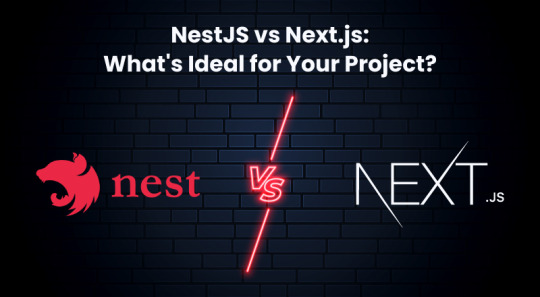
When it comes to web development, selecting the appropriate framework is crucial. Nest.js and Next.js are two prominent frameworks, each catering to different development needs. Let’s delve into their technical aspects to help you decide which is right for your project.
Nest.js is a progressive Node.js framework designed for building efficient, scalable, and maintainable server-side applications. Utilizing TypeScript, Nest.js ensures strong typing and modern JavaScript features, which enhance code quality and developer productivity. Its modular architecture facilitates the organization of code into easily manageable modules, making it ideal for enterprise-level applications. Nest.js supports a variety of libraries and tools, including TypeORM for database management and Passport.js for authentication, making it a robust choice for complex backend systems.
On the flip side, Next.js is a React-based framework perfect for building server-rendered or statically generated web applications. Known for its exceptional SEO capabilities, Next.js offers features like automatic static optimization, dynamic routing, and API routes. Recent advancements in static site generation (SSG) and incremental static regeneration (ISR) enable developers to create high-performance websites that provide excellent user experiences. Next.js also simplifies full-stack development by allowing API routes within the same project.
In conclusion, if your project requires a sophisticated backend with extensive APIs, Nest.js is the optimal choice. For projects emphasizing frontend performance and SEO, Next.js is unparalleled. Explore more about these frameworks and make an informed decision for your next development project on our blog.
Check out our blog for an in-depth comparison of Nest.js and Next.js to determine the best framework for your needs.
1 note
·
View note
Text
11 Best Node.js Frameworks for Web Apps in 2023
When creating reliable and user-centered web apps in the dynamic world of web app development, choosing the right framework is of utmost importance. The event-driven architecture and non-blocking I/O operations of Node.js have earned it recognition, and developers continue to choose it. Numerous Node.js frameworks have emerged as the top choices for developing user-friendly web apps as of 2023. We will examine the top 11 Node.js frameworks for web apps in 2023 and discuss each one's benefits in this article.
1. Express.js: The development of robust web applications is streamlined by Express.js, one of the most well-liked and compact frameworks. It's suitable for beginners and promotes quick learning because of its simplicity.
Advantage: Simpleness: Express.js is a favourite among programmers who are new to Node.js since it is so simple to understand and use.
2. Socket.io: Socket.io offers seamless Socket compatibility for real-time programs like online games and chat programs. Its event-driven programming style makes sure that clients and servers may communicate effectively in real-time.
Advantage: Real-time Real-time bidirectional event-based communication is made possible with Socket.io, ensuring a positive user experience in real-time apps.
3. Meteor: Real-time web app development is made easier with Meteor, a full-stack platform. By providing an integrated development environment, it guarantees a constant user experience across the whole development cycle.
Advantage: Stack-based development: Meteor streamlines the development process by enabling developers to create both the frontend and backend of web apps.
4. Nest.js: Nest.js is a TypeScript-based framework that is scalable and efficient. It makes large-scale applications possible by leveraging decorators and dependency injection to create highly modular and manageable codebases.
Advantage: Scalability: The modular architecture of Nest.js enables the building of scalable apps, assuring smooth performance as your user base expands.
5. Koa.js: Koa.js, created by the same team that created Express.js, is a lightweight and expressive framework that focuses on offering a more robust set of functions. It makes writing asynchronous programming easier by utilising async functions.
Advantage: Async/Await Support: Koa.js makes asynchronous programming easier using async/await syntax, improving code readability and maintainability.
6. Hapi.js: Hapi.js promotes configuration-driven development by providing a robust plugin system for creating APIs and services. It supports input validation, authentication, and caching quite well.
Advantage: Hapi.js simplifies development through setup, allowing developers to focus on designing features rather than boilerplate code.
7. Adonis.js: Adonis.js is a fully functional MVC framework that makes it easier to create reliable, maintainable apps. It comes standard with capabilities like ORM, authentication, and validation.
Advantage: Feature Completeness: Adonis.js has a large number of integrated features, which minimises the need for external libraries and provides a uniform development environment.
8. LoopBack: For creating APIs and microservices, LoopBack is a highly extendable and adaptable framework. It provides strong capabilities for building data models and integrating them with different data sources.
Advantage: Data connectivity is made simple by LoopBack by offering tools for easily creating data models and connecting them to databases and REST APIs.
9. Sails.js: Sails.js is a Ruby on Rails-inspired real-time MVC framework. It makes developing data-driven APIs easier by providing blueprints, which are code generators for basic operations.
Advantage: Rapid Prototyping: Using blueprints, Sails.js speeds up development by allowing developers to quickly prototype concepts and iterate on functionality.
10. Feathers.js: A quick and adaptable framework for creating real-time applications is feathers.js. It offers a straightforward API for building RESTful services and supports a number of different databases and authentication techniques.
Advantage: Flexibility: Feathers.js gives developers the freedom to select the databases, authentication procedures, and other components that best suit their applications' needs.
11. Strapi: Strapi is a Node.js-based headless CMS (Content Management System). It offers an admin panel for controlling content as well as a programmable API for distributing material across other platforms.
Advantage: material management: Strapi makes it easier to manage material by providing a user-friendly admin interface that even non-technical individuals can utilize.
In conclusion, The particular needs of your web app development will determine the Node.js framework you use. There is a Node.js framework designed for your needs in 2023, whether you value simplicity, real-time functionality, scalability, or content management. You can successfully complete your web development projects by choosing a framework by learning the benefits of each one.
0 notes
Text
How to Learn NodeJS as a Django Developer?
If you're a Django developer looking to expand your skill set and delve into the world of Node.js, you're in for an exciting journey. Node.js is a powerful runtime environment that allows you to build scalable, high-performance applications using JavaScript on both the client and server sides. Learning Node.js alongside your Django expertise can open up a wide range of possibilities and career opportunities. Here's how you can get started:
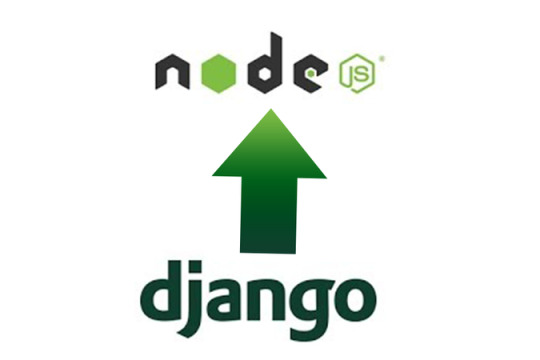
1. Understand the Basics of JavaScript: Since both Node.js and client-side JavaScript use the same language, start by mastering JavaScript fundamentals. Get comfortable with variables, data types, loops, and functions. This strong foundation will make transitioning to Node.js smoother.
2. Explore Node.js Fundamentals: Familiarize yourself with Node.js core modules, its event-driven architecture, and the npm (Node Package Manager). Learn how to create a simple server, handle HTTP requests, and work with asynchronous operations, which are essential in Node.js development.
3. Build RESTful APIs: Django developers often work with RESTful APIs. Node.js excels in creating APIs as well. Learn how to create APIs using frameworks like Express.js, which simplifies the process of building robust and scalable APIs.
4. Database Integration: Just like Django's ORM, Node.js has libraries and frameworks (such as Mongoose for MongoDB) for working with databases. Learn how to connect, query, and manage databases in Node.js.
5. Authentication and Authorization: Study authentication and authorization techniques in Node.js. This knowledge will be valuable when building secure applications.
6. Real-time Applications: Node.js is renowned for its real-time capabilities. Explore technologies like WebSockets and Socket.io to build real-time features in your applications.
7. Testing and Debugging: Node.js has a robust ecosystem for testing and debugging. Learn how to write unit tests, perform integration testing, and debug effectively.
8. Scalability and Deployment: Node.js is well-suited for building scalable applications. Understand concepts like clustering and load balancing. Learn how to deploy Node.js applications to platforms like Heroku or AWS.
9. Explore Frameworks: Just as Django is built on Python, Node.js has various frameworks. Consider diving into frameworks like Express.js, Nest.js, or Meteor.js to streamline your development process.
10. Projects and Practice: The best way to learn Node.js is through hands-on projects. Start with small projects and gradually work your way up to more complex applications. Building a portfolio of Node.js projects will demonstrate your skills to potential employers or clients.
By combining your Django expertise with Node.js, you'll become a versatile full-stack developer, capable of creating a wide range of web applications and services. Embrace the learning process, stay curious, and enjoy the journey of mastering Node.js as a Django developer.
0 notes
Text
A Small Guide to Choose the Right NodeJs Framework for Web Development
Either you are at developer end or at client-end, you need to be well-aware of the various frameworks that nodejs development services offer to make the right choice for web development. Although choosing the right framework can be tricky, we would like to list these frameworks for your better understanding.
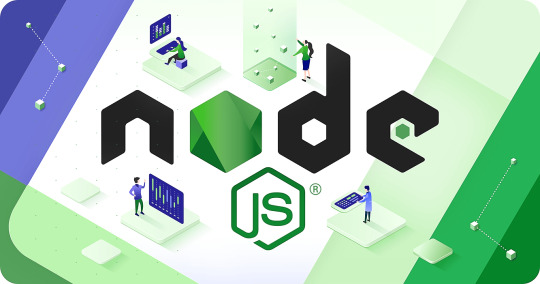
1. AdonisJs
Apps built with NodeJS & Adonis perform faster across various platforms and operating systems. Its stable eco-system helps developers to choose a business-friendly package and write a server-side web application. Adonis creates efficient SQL-queries as they are easy to learn and implement.
2. Express.js
For fast, minimalist, and non-opinionated framework Express.js can help servers and routes to be easily managed. It offers the ability to develop lightweight apps to carry out multitasks seamlessly. Express.js acts as a bridge between front-end & database, for users to send and receive a request to configure routes. The best thing is that developers with basic knowledge would find it easy to learn and it also offers customizable solutions. Express.js is a very useful framework under any nodejs development services.
3. Meteor.js
Its a full-stack JS platform for developers to build cutting-edge applications for web and mobile with the ability to add real-time updates. What sets this framework apart from others is that the development and real-time updates can run simultaneously. It offers a simple process by providing an entire tier of the application written in the single JavaScript language.
4. Nest.js
To make server-side web applications more efficient, scalable, and fast, NestJS is the right option to work with NodeJS. It combines elements like OOP, FP, FRP to provide an amazing architecture. It has an array of features, enabled through Nest CLI.
5. Sails.js
Build high-speed and scalable applications with Sails.js as it uses a data-driven API that offers plenty of service-oriented architecture. Its equipped with ORM to make itself compatible with all databases. It supports many adapters like MYSQL, MongoDB, PostgreSQL, etc. It also includes automated generators, it can work easily with other languages like React, Angular, Backbone, iOS/Objective C, etc.
6. Koa.js
Koa.js is the next-gen framework as unlike others it uses ECMAScript (ES6) methodologies. Developers can find the error faster and resolve them efficiently. Koa.js offers futuristic options, it has component-based building blocks, and very modular.
7. LoopBack.js
Build dynamic applications with the help of CLI & API explorer using the LoopBack.js framework. It can conveniently be used with REST and other databases like Postgres, MYSQL, MongoDB, Oracle, etc. You can also build a dynamic application using schema, developers can connect devices and browsers to data and services. It runs on both on-premises and cloud servers. This is also one of the favorable frameworks when it comes to the Node.js application development service.
8. Hapi.js
Hapi.js helps the server data to be implemented by bridging the gap between server-side and client-side. It can create a server on a specific IP which is possible through the onPreHandler feature. Hapi.js has good command over request handling, it has rich functions to build web servers, other features are also included like cashing, authentication, and input validation. It offers API references with a detailed view.
9. Derby.js
This framework allows developers to add customized codes to deliver fully scalable web applications. Derby.js uses native DOM methodologies to render templates on the server. The framework is used by a major nodejs development company.
10. Total.js
Total.js is used to build fast and customized web apps and eCommerce apps, REST service apps, IoT apps, etc. It offers faster developments with a low maintenance cost that is both advantageous to clients and developers. Web Application Development Company has been using Total.js for long to deliver scalable apps.
11. Socket.io
Socket.io in Node.js framework enables real-time, bidirectional, and event-based communication. It runs on cross-platforms like iOS, Mac, Windows devices, and browsers. You can create a chat app in just a few lines of code, provides real-time analytics, binary streaming, document collaboration, etc.
We hope this will help you a little to understand the difference between these Node.JS frameworks. If you would like to seek further information regarding nodejs development services, you can get in touch with W3villa technologies, for consulting services and custom web application development services.
#web#web application development#web development#nodejs#nodejsdevelopment#nodejsdeveloper#web developer
1 note
·
View note
Text
Create a Multi-Tenancy Application in Nest.js Pt 4
Create a Multi-Tenancy Application in Nest.js Pt 4
Introduction Authentication and Authorization are essential parts of most applications. There are many different approaches and strategies to handle authentication. This article presents the same production that can be adapted. We will use Nest.js to build the following: The user needs to log in using /login endpoint. After login, you will get a token. Any user has roles and privileges. Users…
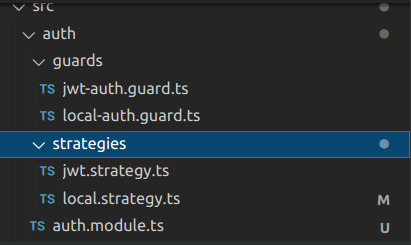
View On WordPress
0 notes
Link
The written version of the video: nest js auth
This video is the fourth lesson of the Node.js Course, where we are going to create Node js login with PostgreSQL and user authentication. In this course, we are building a banking app backend using Nest.js, Sequelize, PostgreSQL, and Typescript.
#node js login with postgresql#node js course#node js course for beginners#nestjs#nest js#nest js auth#node js tutorial#nodejs tutorial#node.js tutorial for beginners#node js authentication#json web token#node jsnode authentication#node js user login tutorial#node js login tutorial#node js user login#node js tutorial for beginners#node js login#node js authentication tutorial#node js user authentication#rest apinode tutorial#user authentication#node js crash course
0 notes
Text
Top Nodejs Frameworks You Should Know About – Checkout in Detail For Each
There are mainly two things to consider when choosing a node.js framework for any of your projects:
How robust and scalable is the platform?
How comfortable is the development process?
Developers prefer a platform that is both advanced and provides flexibility to a diverse range of web applications. This is why NodeJS frameworks have been consistently ranked at the top of solutions for developers. NodeJS is versatile enough to enable building smart, scalable network-based applications on the server-side. As an open-source platform, NodeJS framework is also a cross-platform for JavaScript runtime. Since it is an event-based, non-blocking I/O model, Node.js is extremely lightweight and efficient.
Let us look at some of the best NodeJS frameworks that undoubtedly make your work with JavaScript applications smoother.
HAPI.js
HAPI is one of the most robust and powerful frameworks in use today to build efficient APIs. It has a well-developed plugin system and includes key features such as input validation, configuration-based functionality, implement caching, error handling, logging, and more features. It is one of the big 3 Node.js frameworks as the framework is highly customisable. It is used to develop REST APIs, as well as other software applications.
Hapi.js can be used with MySQL, MongoDB, and Postgres to create potential and static websites. And since it comes with a JavaScript Templating Engine, rendering dynamic content is very easy.
Socket.io
Socket.io is a Javascript library to allow the bidirectional flow of data between the server and the web client in real-time applications. It is a full-stack framework and provides developers with a simple and straightforward API that works seamlessly with every service. Socket.io is chosen for its speed and reliability that is the hallmark of this framework. By providing similar APIs on the server-side section and the web-client section, it works on much higher speeds. It is highly versatile, as it even supports auto-correction, anomaly detection, rendering JSON serializable objects, multiplexing, etc. If you are looking to hire Node.js developer, this should definitely be a part of their skillset.
ADONIS.js
Adonis.js is a Model-View-Controller node.js framework helps developers in building an API Rest with JWT authentication and database access. CLI is bundled into the framework to make it possible to create bootstrap for applications. That is why it is highly recommended for writing scalable server-side applications. It runs on all major OS and developers can easily write different web applications with Adonis in a few lines of code. It offers a consistent ecosystem for developers to create what they need easily and smartly.
Keystone.js
Keystone.js is a full-stack and open-source framework. It is developed in expree.js and MongoDB and is one of the most powerful frameworks for developing database-driven applications, websites, and even APIs. It offers a great Admin UI to let developers manage all their tasks easily and efficiently. Since it can be integrated with online platforms such as Cloudinary, Mandrill, Embedly, and Google Places they can easily manage data handling. It is also compatible with all major OS and provides stable management for the development activities.
Meteor.js
This is one of the fundamentals of Node.js frameworks, as it is a full-stack framework for building real-time applications. It can help developers build both mobile and web-based Javascript applications. Since it shares the same APIs on both the server-side and client-side applications, it provides optimal performance of the applications. A Node.js development company would consider Meteor.js an important part of the technology they use since it gives users the liberty to use any other platform at an instance. If you are hiring a Node.js developer, it is important to gauge whether they have adequate experience with using the pre-written modules.
Koa.js
Most Node.js development companies use Koa.js since it is extremely powerful while being lightweight in terms of its requirements. Koa.js is a small, robust web framework that offers a powerful middleware framework. It can be used to develop potential web-based applications and APIs. If you want potential web-based applications and APIs, you should hire Node.js developers who can leverage Koa.js quality of web applications and error management. It allows developers to work with applications from scratch so they can customise it with features that they need only.
Sails.js
Sails.js is another great MVC micro-framework that offers a great solution for building browser-based applications. If you hire Node.js developer for real-time chat applications, social media applications, multiplayer games or dashboards, chances are they will use this framework to accomplish it. It also offers developers the ease to work with almost any database since it comes inbuilt with the ORM solution. It is highly compatible with quite a few front-end platforms and the developers will find this extremely useful.
Nest.js
A Node.js development company would use Nest.js to develop progressive server-side applications using cumulative Javascript. It offers great typing reliability (as it uses TypeScript) and includes components of FP, OOP, and FRP. When you hire Node.js developer, they will make use of the modular structure of the Nest.js so the code can be arranged systematically in different modules by using external libraries easily. It can be used to build highly scalable, loosely linked, testable, and easily manageable applications and can integrate a lot of unique features.
Loopback.js
This is one of the best enterprise-grade Node.js frameworks that is used by big businesses. It is an highly-extensible framework and is an ideal open-source framework that allows developers to create dynamic REST APIs with very little or no coding. If you want to hire Node.js developer for creating SDKs and API Documentations, it offers the API Explorer widget that comes by default with the framework. It comes with a CLI tool to scaffold the Node.js server. And as a full-stack configuration, developers can use direct filters to easily inquire their database.
Express.js
Any Node.js Development Company would count Express.js as one of the first selections for development. It is well-known for its speed, flexibility and minimalistic approach to delivering adjustable, fast and dynamic features for developing both web and mobile applications. It allows plotting single-page and multi-page and developers can render large HTML pages dynamically. Express.js also lets developers respond to HTTP requests by setting up middlewares. Mostly, it is extremely popular since it supports multiple template engines, easy HTTP methods, and asynchronicity to deliver unbeatable performance.
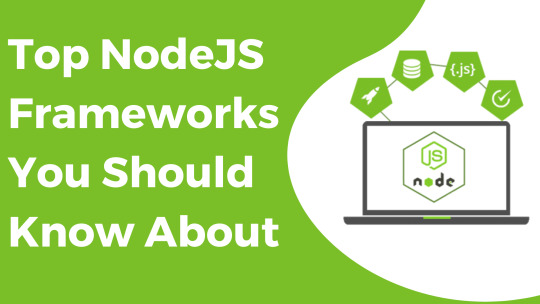
0 notes
Text
Top Nodejs Frameworks You Should Know About - Checkout in Detail For Each
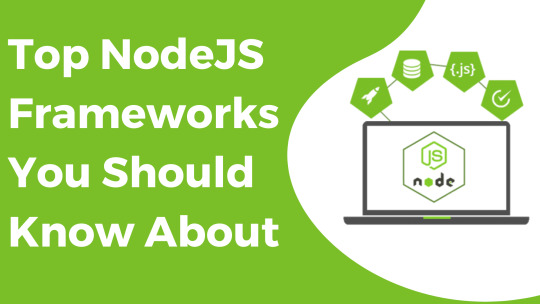
There are mainly two things to consider when choosing a node.js framework for any of your projects:
How robust and scalable is the platform?
How comfortable is the development process?
Developers prefer a platform that is both advanced and provides flexibility to a diverse range of web applications.
This is why NodeJS frameworks have been consistently ranked at the top of solutions for developers. NodeJS is versatile enough to enable building smart, scalable network-based applications on the server-side. As an open-source platform, NodeJS framework is also a cross-platform for JavaScript runtime. Since it is an event-based, non-blocking I/O model, Node.js is extremely lightweight and efficient.
Let us look at some of the best NodeJS frameworks that undoubtedly make your work with JavaScript applications smoother.
HAPI.js
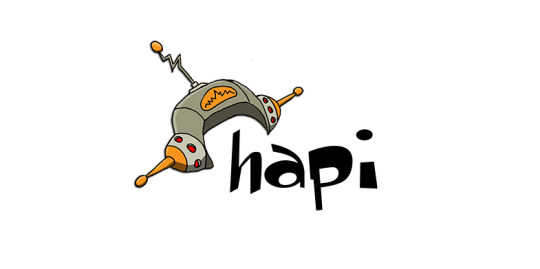
HAPI is one of the most robust and powerful frameworks in use today to build efficient APIs. It has a well-developed plugin system and includes key features such as input validation, configuration-based functionality, implement caching, error handling, logging, and more features. It is one of the big 3 Node.js frameworks as the framework is highly customisable. It is used to develop REST APIs, as well as other software applications.
Hapi.js can be used with MySQL, MongoDB, and Postgres to create potential and static websites. And since it comes with a JavaScript Templating Engine, rendering dynamic content is very easy.
Socket.io

Socket.io is a Javascript library to allow the bidirectional flow of data between the server and the web client in real-time applications. It is a full-stack framework and provides developers with a simple and straightforward API that works seamlessly with every service. Socket.io is chosen for its speed and reliability that is the hallmark of this framework. By providing similar APIs on the server-side section and the web-client section, it works on much higher speeds. It is highly versatile, as it even supports auto-correction, anomaly detection, rendering JSON serializable objects, multiplexing, etc. If you are looking to hire Node.js developer, this should definitely be a part of their skillset.
ADONIS.js

Adonis.js is a Model-View-Controller node.js framework helps developers in building an API Rest with JWT authentication and database access. CLI is bundled into the framework to make it possible to create bootstrap for applications. That is why it is highly recommended for writing scalable server-side applications. It runs on all major OS and developers can easily write different web applications with Adonis in a few lines of code. It offers a consistent ecosystem for developers to create what they need easily and smartly.
Keystone.js
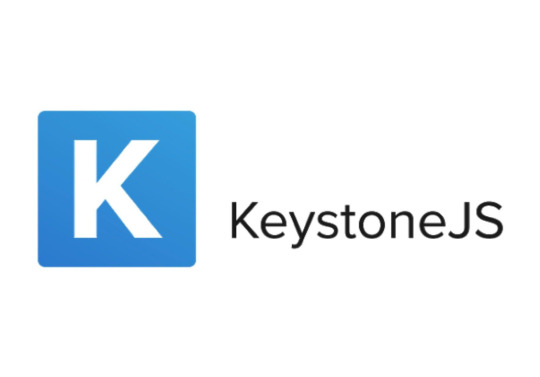
Keystone.js is a full-stack and open-source framework. It is developed in expree.js and MongoDB and is one of the most powerful frameworks for developing database-driven applications, websites, and even APIs. It offers a great Admin UI to let developers manage all their tasks easily and efficiently. Since it can be integrated with online platforms such as Cloudinary, Mandrill, Embedly, and Google Places they can easily manage data handling. It is also compatible with all major OS and provides stable management for the development activities.
Meteor.js
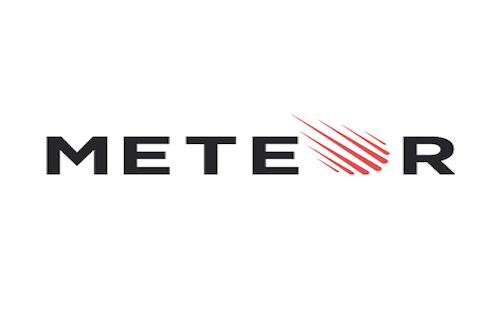
This is one of the fundamentals of Node.js frameworks, as it is a full-stack framework for building real-time applications. It can help developers build both mobile and web-based Javascript applications. Since it shares the same APIs on both the server-side and client-side applications, it provides optimal performance of the applications. A Node.js development company would consider Meteor.js an important part of the technology they use since it gives users the liberty to use any other platform at an instance. If you are hiring a Node.js developer, it is important to gauge whether they have adequate experience with using the pre-written modules.
Koa.js
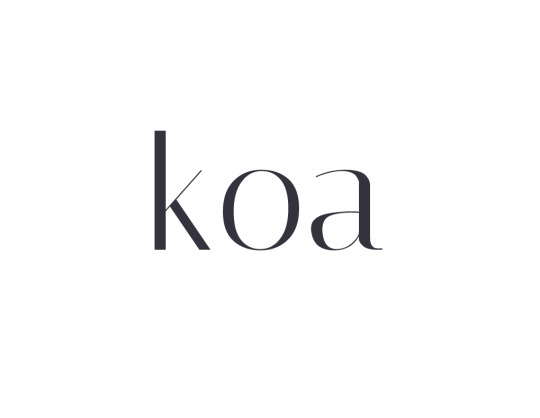
Most Node.js development companies use Koa.js since it is extremely powerful while being lightweight in terms of its requirements. Koa.js is a small, robust web framework that offers a powerful middleware framework. It can be used to develop potential web-based applications and APIs. If you want potential web-based applications and APIs, you should hire Node.js developers who can leverage Koa.js quality of web applications and error management. It allows developers to work with applications from scratch so they can customise it with features that they need only.
Sails.js
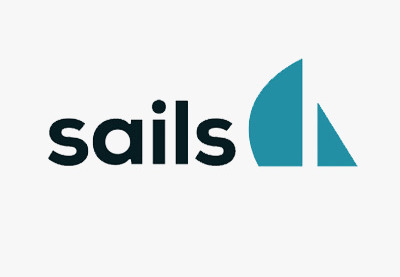
Sails.js is another great MVC micro-framework that offers a great solution for building browser-based applications. If you hire Node.js developer for real-time chat applications, social media applications, multiplayer games or dashboards, chances are they will use this framework to accomplish it. It also offers developers the ease to work with almost any database since it comes inbuilt with the ORM solution. It is highly compatible with quite a few front-end platforms and the developers will find this extremely useful.
Nest.js
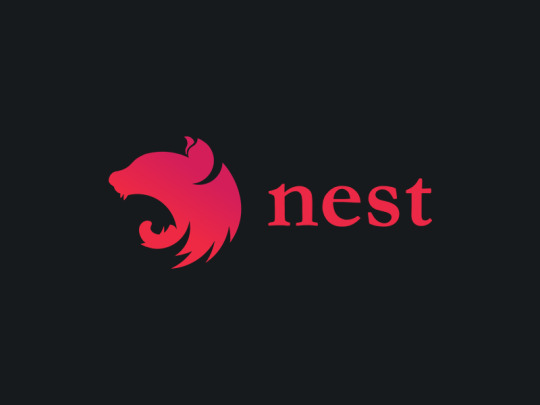
A Node.js development company would use Nest.js to develop progressive server-side applications using cumulative Javascript. It offers great typing reliability (as it uses TypeScript) and includes components of FP, OOP, and FRP. When you hire Node.js developer, they will make use of the modular structure of the Nest.js so the code can be arranged systematically in different modules by using external libraries easily. It can be used to build highly scalable, loosely linked, testable, and easily manageable applications and can integrate a lot of unique features.
Loopback.js
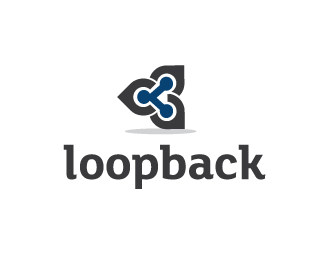
This is one of the best enterprise-grade Node.js frameworks that is used by big businesses. It is an highly-extensible framework and is an ideal open-source framework that allows developers to create dynamic REST APIs with very little or no coding. If you want to hire Node.js developer for creating SDKs and API Documentations, it offers the API Explorer widget that comes by default with the framework. It comes with a CLI tool to scaffold the Node.js server. And as a full-stack configuration, developers can use direct filters to easily inquire their database.
Express.js
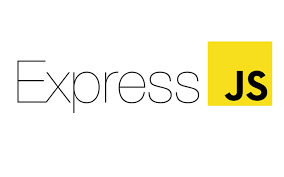
Any Nodejs development company would count Express.js as one of the first selections for development. It is well-known for its speed, flexibility and minimalistic approach to delivering adjustable, fast and dynamic features for developing both web and mobile applications. It allows plotting single-page and multi-page and developers can render large HTML pages dynamically. Express.js also lets developers respond to HTTP requests by setting up middlewares. Mostly, it is extremely popular since it supports multiple template engines, easy HTTP methods, and asynchronicity to deliver unbeatable performance.
Source: https://www.thinktanker.io/blog/top-nodejs-frameworks-you-should-know-about.html
#NodeJSDevelopmentCompany#nodejsdevelopmentcompanyindia#NodeJSDevelopmentCompanyDubai#NodeJSDevelopmentCompanyUSA#NodeJSDevelopmentIndia
0 notes
Link

But before 2009. Developers faced a challenge since the Javascript framework only allowed for client-side scripting. Then, a programmer by the name Ryan Dahl came up with the concept of Node.js, and the world became a better place to live in, at least for the programmers.
Node.js allowed programmers to use Javascript language and script server-side, which soon led to its rapid adoption across the world. Node.js slowly climbed the popularity ladder this past decade, and became the most preferred technology in 2019, according to this Stack overflow survey.
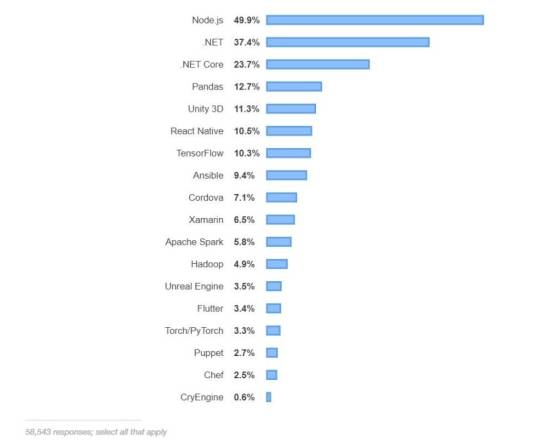
So which is the most popular Node.js framework that developers love in 2020? We asked a few of our Node.js developers here at SoluteLabs, and here is a list that we got.
1. Express.JS
Express.JS is one of the top Node.JS frameworks you should be looking at.
Bug, why do our developers love Express.JS the most? Is it the minimalistic, almost zen-like nature of the framework? Is it the ability to create both desktop and mobile applications with ease?
We would say it is a combination of all these factors and more.
At its core, Express.js is a series of middleware function calls, each having a specific task to do. It is not opinionated, which means you are free to use it in different ways.
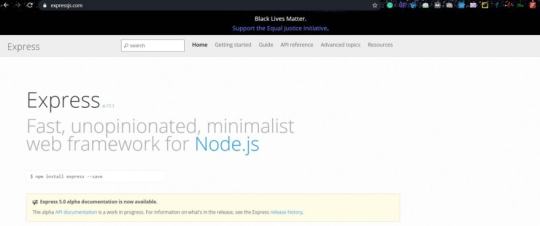
Why do our developers love Express.JS?
Simple framework. Easy to understand.
Enables maintainable code and modular design.
Easier to serve static files and resources.
Based on HTTP methods and URLs, developers can easily define the routes of your application.
Comes with MVC architecture. Creating eccentric apps is easier.
2. Sanity.io
Sanity.io, another top Node.JS framework, is a headless CMS System built on Node. JS technology. What is a headless CMS system? Good question. A headless CMS system provides an easier way to host the content you have. The only difference? Here, content is provided as a data instead of rendering a web page.
Wanna learn more about the fascinating world of headless CRMs? Head on over to this page. No more complaining that we don’t speak slow enough.

Why do our developers love Sanity.io?
Ability to access fully structured content
Extremely customizable so that it is easy to generate product documents (in markdown).
Open source and getting started is free.
Users can CRUD (Create, Read, Update, and Delete), edit images, information, etc.
Can manage all of your content from one place.
3. Nest.JS
What if we wanted to build extremely adaptable, testable, and efficiently viable apps, without having to complicate things like alternating between the front end and back end? What if seamless data streaming and simple coding experience are also part of your bucket list? ( Boy, do you ever stop?)
The answer to all these questions was provided by a programmer called Kamil Mysliwiec (yup, the spelling is right, we checked) when he developed Nest.js. Nest framework is a combination of the features of Functional Programming, Object-Oriented Programming, and Functional Reactive Programming, and is built for TypeScript.

Why do our developers love Nest.js?
Modular architecture — you can use other libraries in your project.
Uses TypeScript and core concepts of Angular, which means Angular developers can learn it quickly.
Apps are more reliable, thanks to TypeScript.
Nest CLI opens the doors to an awesome set of features.
You can build all kinds of server-side applications using Nest.
4. Koa.JS
Let’s talk about another Node.JS framework. What word starts with a K, ends with an A, and is usually found hanging from a tree? If your answer is a Koala bear, you are probably right. But if you are a Node.JS programmer, you probably said Koa, right?
Koa is smaller, more expressive, and, all in all, a fun way to develop web apps. Like Bruce Willis and his son in Die Hard 5, if we may. It leverages async functions, meaning you can ditch callbacks and improve error-handling.

Why do our developers love Koa.JS?
Good user experience from a very lightweight framework. At just 550 lines of code, Koa is light.
A lot of helpful methods are available easily. Koa’s footprint is low as well!! How you may ask? Simple, no middleware is bundled.
Writing middleware is as much fun as having a chocolate tart.
A huge variety of customizable options, making developers happy as a toddler in a candy store.
Control is now both upstream and downstream since there are no more callbacks.
5. Prisma.io
If you haven’t heard about Prisma, it is probably because our developers keep their knowledge of the technology as low-key as possible, leaving people wondering how they develop such robust applications with ease. Just kidding.
Prisma, as their website puts it, is an open-source database toolkit, built with one aim and one aim only — making database access easier. It does this with the help of an auto-generated and type-safe query builder. No fairies or goblins here.

Why do our developers love Prsima.io?
Prisma helps avoid repetitive CRUD boilerplate
No more busting your head debugging SQL or complex ORM models.
Intuitive API. Easy to understand Javascript objects.
Sending queries is now simple with a Prisma client.
Use the Prisma Client alongside existing SQL queries or ORMs.
6. Hapi.JS
Ask any layman on the streets what they would use to build a Representational State Transfer (REST) APIs, and you would most likely get a confused stare back, possibly accompanied by a slap to the face for wasting their time.
Ask a developer the same question, and he would happily say Hapi.js (pun intended). Hap takes everything that was great in Express. JS, and then adds some of its capabilities to make it a sort of big brother of Express.JS. Instead of spending time building the infrastructure, developers can use that time to write reusable application logic.

Why do our developers love Hapi.JS?
Fixing bugs and adding new features now don’t take forever.
Build APIs for different kinds of clients, be it mobile or single-page apps.
Plugin-based architecture makes scaling easy.
Greater control over how requests are handled.
Availability of authentication, caching and input validation.
7. Socket.io
Chatbots are fun to talk to, albeit a bit scary. Score tickers are an excellent way to represent some key figures, and fun to have on your website. But how are they built? Not all of us want to know. Most are just happy they have a person (or a bot) to chat with.
But for those who do wanna know, we got you covered. Socket.io is a web socket structure that is used to build all those neat things mentioned above, and more. For those who want a simpler explanation, Socket.io enables the communication between a Node.js server and a browser, which can be any browser. There you go. That is as simple as it gets for one of this Node.JS framework.

Why do our developers love Socket.io?
Socket authentication and socket management are much easier.
Multiple namespaces feature is handy while building an application that does a lot of back and forth push communication.
Event encoding, allows the event name to be independent of the encoding mechanism.
Supports a host of features such as anomaly detection, auto-correction, and multiplexing.
Real-time analytics.
8. Loopback.JS
We have been generous with Express.JS framework. So generous, in fact, that we have placed it at the top of this list. But if you Loopback, we mean look back, you can see a couple of Node.JS frameworks on our list that are built to overcome the very drawbacks of express.js. Loopback is one among them.
Loopback is built on top of Express.JS. When this is combined with a few Node.js modules, Loopback can be used to build REST APIs for applications easily. We have covered REST APIs in an earlier part of the blog (this is for all you lazy scrollers). Loopback allows you to create APIs with little or no coding. Seriously.

Why do our developers love Loopback.JS?
Option to run the applications on-premise or in the cloud.
Model-relation-support. It helps users define real-world mappings between their models.
Easier to design, build APIs, connect to databases, and test.
Connecting devices and browsers to data is a breeze.
Structured code and rich documentation.
That’s a wrap, folks. Eight of the most used Node.JS frameworks by our developers, along with their reasons. If you have an argument about any of these frameworks, remember, it is our developers who took the decision to put these frameworks here, and you will have to sort it out with them. Wanna know more? Write to us in the comments section below.
0 notes